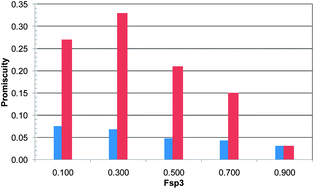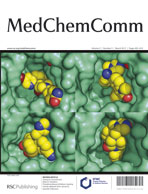Escape from Flatland 2: complexity and promiscuity
Abstract
Toxicity plays a major role in attrition in the clinic and promiscuity has been linked to toxicity. A number of molecular descriptors have been identified that contribute to promiscuity including ionization and logP. In this study we report on the relationship between complexity, as measured by two descriptors [fraction sp3 (Fsp3) where Fsp3 = (number of sp3 hybridized carbons/total carbon count) and chiral carbon count], and promiscuity as well as Cyp450 inhibition. We find that increasing complexity reduces promiscuity and Cyp450 inhibition. As an understanding of key property descriptors has helped the


 Please wait while we load your content...
Please wait while we load your content...